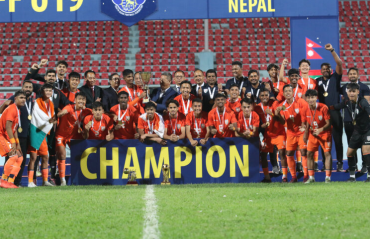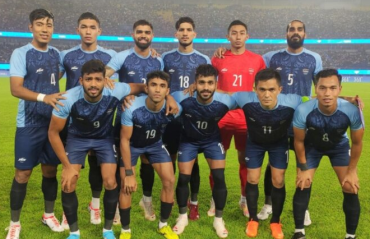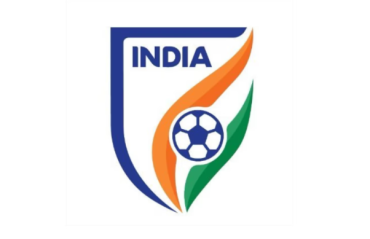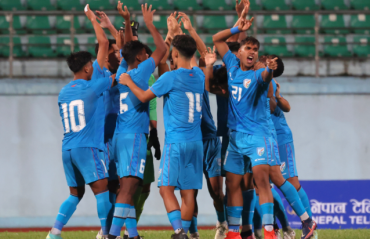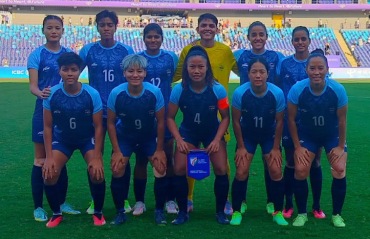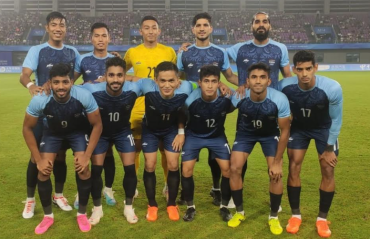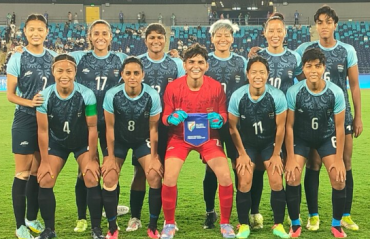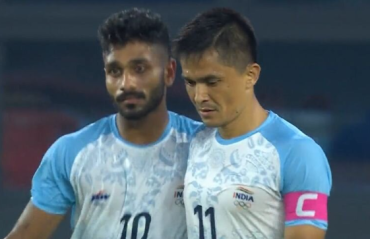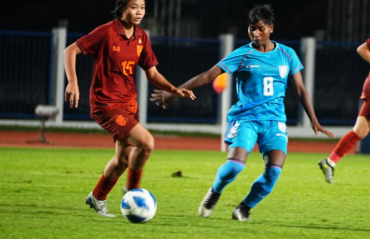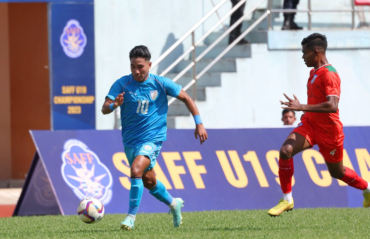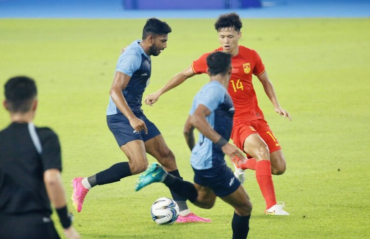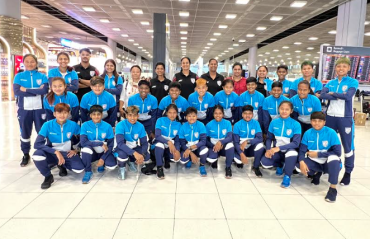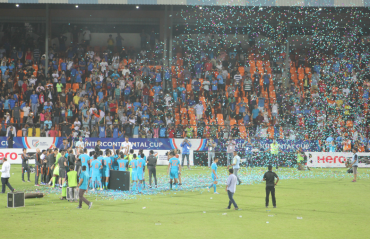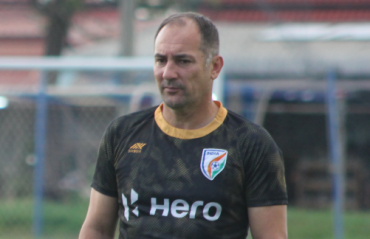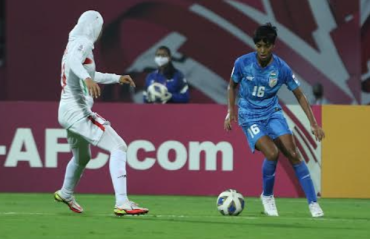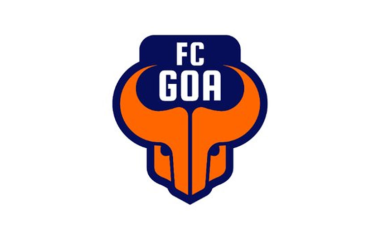SUNBURNT TERRACE: Not much of a merger, more a simple solution to boot out the have-nots
- By Chiranjit Ojha

- February 29, 2016

THE RUMOURS HAD BEEN going around for a while, and a couple of days back, AIFF Vice President Subrata Dutta got the cat out of the bag: the merger is happening by 2017, and it will be one that further fortifies protection of the monetary interests of ISL and its stakeholders at the cost of shunning the majority of legitimate football clubs to a subsidiary existence in a re-jigged league system with the ISL at the top.
According to the proposed plan -- that Dutta said is the direction the whole merger process is leaning towards -- is that 3 I-League clubs, namely East Bengal, Mohun Bagan and Bengaluru FC, will be taken into the ISL fold. Both divisions of I-League will be disbanded, and a new two-tier league will be created for the clubs that did not make the lucky list. ISL, though, will be the newly appointed top division of India, recognized by AFC and FIFA; its clubs holding AFC A-licenses as real professional clubs. The ISL winner will represent India in the AFC Champions League qualifiers.
It won't be that much of a merger, after all. ISL will simply take on 3 of the most successful and popular clubs from I-League for itself, just as it took the best players from I-League. AIFF and IMG-Reliance have always treated the I-League as a feeder entitiy for ISL despite being India's top division football league. This only makes it official.
So Indian football is heading towards having a three-tier national league pyramid that incorporates the values of both the European meritocracy and USA's franchise-based system: an amalgam of conflcting ideals to replace the schizophrenic dual league system we currently have in this country.
The second and third tier will have promotion and relegation based on performance, but entry into the hallowed ISL will be reserved only for those who can have an annual budget of Rs 30 crores. It's unclear whether this rule is being implemented with a time limit; but it's obvious that the present ISL team owners will be very much against the idea of this financial barrier not being permanent.
To be fair, it's understandable why the ISL stakeholders are parking the bus on the expansion of ISL. They have had to spend a lot of money to get the whole operation up and running, and they are terrified of the idea that suddenly all their investment will be endangered by on-field merit where cheaper teams with better zeal can beat them and send them into relegation. Also, it's in the interest of the ISL as a brand to have a high entry fee. It's only 2 years old, and too much change makes advertisers and shareholders nervous. So for now at least, it seems our biggest football league is going to be a private event that you have to buy into.
There are other bright sides, too. Because ISL will now have to conform to the AFC norms, each team will only be able to sign 4 foreigners. That will, at once, double the number of Indian players in the ISL, and significantly raise their value. Younger players with less than a shiny I-League record to show will also have a better chance of getting a contract from an ISL club, and the fans will be spared the embarrassment of having to witness someone like Arata Izumi being called the 'Emerging Player of the Match' or Jeje Lalpekhlua receiving the 'Emerging Player of the Season' award. ISL will finally have actual new talent to showcase.
Not to mention its clubs, for the sake of meeting AFC licensing criteria, will have to run academies and junior teams. And that is an unequivocal good news. As a football league, the new ISL will be solidly funded and marketed well enough to spearhead India's domestic football.
The question is what kind of effect it will have on the clubs that missed out. Because anyone who thinks having 11 healthy elite clubs in the country takes care of football is poorly mistaken. What will happen to the likes of Shillong Lajong, Aizawl FC and Sporting Clube de Goa, who have teams that can put up a fight on the football pitch, but cannot cough up the high amount of money required to play in the big league? How about the popular emerging clubs like Kashmir FC, NEROCA and Gangtok Himalayan FC whose long term plan revolves around attracting investment through on-field performance, not the other way around? They have landed in a precarious situation of bait-and-switch because the system they modeled their path on has turned on them.
Royal Wahingdoh fielded a squad on a meagre budget last season and they ended third in I-League. This season they planned to increase their budget to Rs 10 crore, which would have made them title contenders. Wasn't the Shillong-based club's commitment to being competitive a sign of healthy, organic development happening in Indian football? And how did AIFF reward them for that? They presented them with a future that was impossible for them to immediately step up to. They denied them a chance to grow naturally and forced their hand to cut their losses and withdraw from the I-League.
Same thing happened to Pune FC, who invested a lot in infrastructure, but could not have matched the ISL standards of fronting money. These clubs have already fallen because the top division is being franchised out to interests that are primarily monetary. And more are likely to suffer the same fate.
Which is why, the second-tier league which will be run and maintained by AIFF just like I-League is today, is crucial to the future of Indian football. Although having a strong league like ISL be the top division is an exciting prospect of its own, it's retaining its 'walled-garden' aura.
Now, if the second-tier league -- open and meritocratic with promotion and relegation -- is maintained and marketed well with at least some effort going into making it a viable commercial brand, then it may become the new exciting breeding ground for talent and organic growth that I-League has been. The likes of Lajong FC, Aizawl FC and Kashmir FC will have a chance to show off their huge supporter base, their true-to-the-soil approach to the sport and marketability to potential sponsors and investors. And if enough of them can do it, somewhere down the line the equation will flip. Instead of investment being the key to prosperity, the second league will provide enough opportunity for clubs to prosper to an extent and then attract the investment to move up. At this point, their voice as stakeholders in Indian football will be strong enough to raise a demand to open up ISL to the footballing reality of promotion and relegation. And it will make financial sense for IMG-Reliance to actually comply.
But that road is very uphill. I-League, even though it features the best players in the country, has had a hard time measuring up to ISL. When the merger happens, ISL will be more than 5 months long and a part of the league system, which means it will run concurrently with the second league and not share any of the players, making it much harder for the lower league clubs to attract eyeballs.
Clubs that have a good number of loyal fans -- the clubs in Shillong, Mizoram, Manipur as well as Kashmir FC -- will probably weather this storm. For others like Mumbai FC and DSK Shivajians, with rich owners but less following, growth will depend on whether or not they cough up the money and enter ISL. And it will be good for Indian football if they do so. They will add to the alternative voices within the ISL that are not too dear to the establishment, and play a crucial part in the eventual opening up of the ISL to promotion and relegation.
It will be a great help in this case if the Federation Cup is opened up to clubs from all 3 divisions as a knockout tournament a la FA Cup. It will pit the less monied clubs against the ISL elites, and eventually produce shock results that will provide massive exposure to the lower league clubs and boost their cause of projecting themselves as competent candidates who can sustain themselves as ISL clubs. But we don't know whether the Federation Cup will still be around, let alone be expanded to take on a larger role in the Indian football calendar.
Meanwhile, I-League, the unfavoured but loyal child that has stoically served Indian football throughout its existence, will march towards its hour of eulogy. Strictly meritocratic and nonchalantly prone to slow organic growth despite having little promotional support from AIFF and IMG-Reliance, it nonetheless accomplished things that no franchise-based league has ever come close to. It has made it possible for clubs from Meghalaya, Mizoram, Punjab and Sikkim to come up on pure footballing talent and take on the best in the country. And if this season's 2nd Division League turns out right, the I-League's final season in 2016-17 will end up being the most diverse and exciting edition yet; potentially featuring clubs from Kashmir and/or Manipur. Despite all the financial challenges it has had to live with, it will go out on a high, after bearing witness to some of the most unique and historical moments in Indian football.
And imagine if a club other than East Bengal, Mohun Bagan or Bengaluru FC wins it. Then that club will get to represent India in AFC Champions League in 2018, while being relegated to second division at the same time because they don't have enough money. A champion being relegated will be a scandalous occurence, and highlight exactly where this money-first policy utterly fails when it comes to furthering the cause of quality football. And all that would be just an added bonus to the last hurrah of pure footballing merit that I-League 2016-17 will showcase to football loyalists of this country.
But the spirit of I-League, which it inherited from its predecessor National Football League, will live on in the new league of the unlucky clubs. And for these unfavoured children of Indian football, the struggle will remain the same; to grow in the face of negligence and adversity, and somewhere down the line turn the tide of money-driven trend towards franchising the sport and instill the spirit of an open, meritocratic league system embodied by NFL and I-League into ISL.









